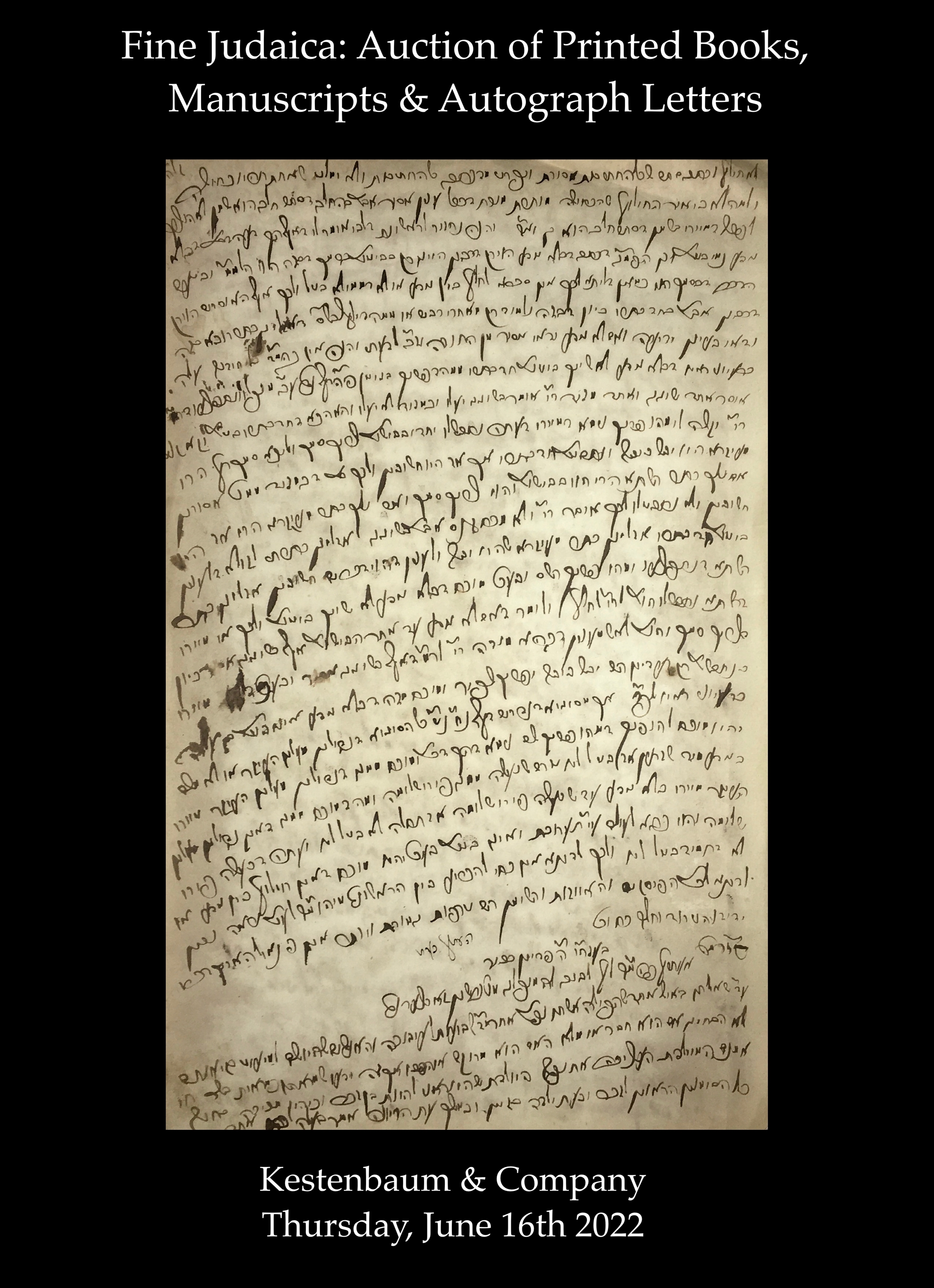Masechta Nidah. With commentaries by Rashi, Tosafoth, etc.

Auction 98 |
Thursday, June 16th,
2022 at 1:00pm
Fine Judaica: Rare Printed Books, Manuscripts, & Autograph Letters
Lot 267
(TALMUD, BABYLONIAN).
Masechta Nidah. With commentaries by Rashi, Tosafoth, etc.
Venice: Marco Antonio Giustiniani 1551
Est: $7,000 - $10,000
PRICE REALIZED $6,000
Tractate from a desperately scarce edition, a result of extreme Church prejudice.
Niddah was the final tractate to be printed by Giustinian’s press, which had been working on various tractate of Talmud since 1546. Edited by Joshua Boaz ben Simon Baruch, this edition was widely recognized as being of high quality in content as well as execution.
At around the same time Giustinian was printing his Talmud, a dispute arose between him and a rival press run by Alvise Bragadin. Bragadin charged that Giustinian had plagiarized his edition of Maimonides’ Mishnah Torah with notes by R. Meir Katzenellenbogen, and was engaging in predatory pricing to run Bragadin out of business. The dispute eventually reached the Pope himself (as well as R. Moses Isserles, the ReMA, who sided with Bragadin).
The Catholic Church at the time was undergoing a period of orthodoxy and anti-liberalism, due to the dissension and perceived heresies of the Protestant Reformation. Thus, the coincidence of the Bragadin-Giustiniani lawsuit with the Church’s increased intolerance led to the scrutinization of all works published at Hebrew presses in Italy. A Papal committee was formed to investigate the blasphemies and offensive content found within the epitomical Jewish text; the Talmud. Within a matter of time, a Papal bull was issued, ordering the burning of the Talmud.
Rome was the first city to follow through on this order, confiscating and destroying all copies of Talmud found in that city on September 9th, 1553 - Rosh Hashanah for the Jews. Venice was next, with the bonfire lit in Piazza San Marco, followed by other cities and towns across Italy.
The book burnings traumatized the local Jewish consciousness, described in numerous accounts and memorialized in countless piyyutim. R. Abraham Menachem Rapa of Porto records in his Minchah Belulah (Verona, 1594):
‘A fiery law’ (Deutoronomy 33:2)’. This refers to the destruction we have seen… across Italy the Talmud was burned in the year 1554… The edict went out from Rome to use them as fodder for the fire. In Venice… a continuous fire that did not cease. I established this day for myself each year as dedicated to fasting, crying and mourning. For this day was bitter to me like the day of the burning of the Temple. (See also Joseph HaKohen’s Emek Habacha [Jerusalem, n.d.] p. 89, and the introduction to Judah ben Samuel Lerma’s Lechem Yehuda [Sabbioneta, 1554]).
With only 1,000-1,500 copies of each tractate printed, Giustinian’s Talmud was nearly completely obliterated; thus, <<each surviving volume is highly rare.>>
Forbidden from printing most new works, the Golden Age of Venetian Hebrew printing had come to an abrupt end. Moreover, without appropriate books, the level of Torah learning in Italy plummeted, with major centers sprouting up elsewhere. Thus, the effects of the Papal decree were felt for decades, if not centuries, to come.
The burning of the Talmud in Italy marks one of the darkest periods of the Jewish exile. Yet, the survival of this tome testifies to the indomitable spirit of the Jewish people and its dedication to the Torah.
